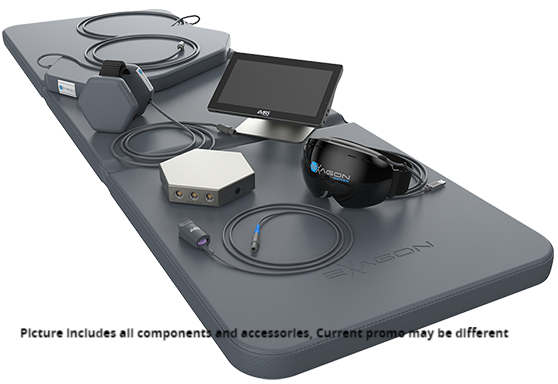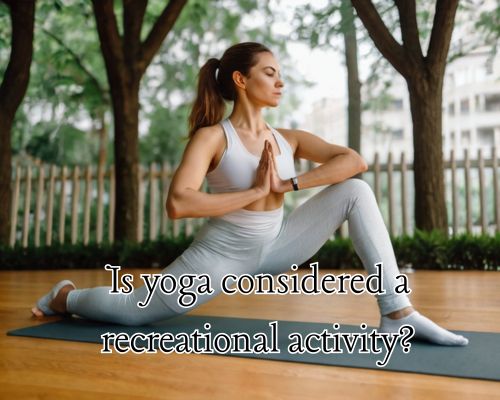Yoga has become a global phenomenon, practiced in studios, parks, homes, and wellness retreats from New York to New Delhi. But as its reach expands, one pertinent question arises—is yoga considered a recreational activity? In Mornington, Australia, this question holds practical relevance for those seeking wellness experiences that are both physically engaging and mentally refreshing.
To fully understand yoga’s role within the recreational sphere, it’s essential to explore its modern interpretations, health benefits, and community integration—especially in scenic locales like the Mornington Peninsula, where wellness culture is thriving.
Understanding Recreational Activities in Modern Wellness Culture
A recreational activity is broadly defined as any activity done for enjoyment, relaxation, and personal enrichment during one’s free time. These can include walking, dancing, swimming, and increasingly, mind-body disciplines like yoga and tai chi.
Yoga, in this sense, fits perfectly within this definition. It is non-competitive, often performed in a social or community setting, enhances mental clarity, and provides physical exercise—key hallmarks of recreational therapy and leisure activities.
In Mornington, recreational activities are an integral part of the lifestyle, driven by the region’s beautiful coastal backdrop, community parks, and strong local health culture. Yoga has found a natural home here, where health-conscious residents and tourists alike embrace recreational pursuits that improve holistic well-being.
Yoga in Mornington: More Than Just Exercise
With its calm beaches, nature reserves, and wellness hubs, Mornington offers the perfect backdrop for those seeking yoga as a means to unwind and reconnect. Local yoga studio have positioned yoga not merely as a fitness class but as a recreational experience—blending movement, mindfulness, and community.
These studios often promote programs under categories such as “mindful movement,” “recreational wellness,” or “restorative practices,” reinforcing yoga’s recreational nature. In this way, yoga in Mornington transcends traditional exercise routines, aligning more closely with leisure pursuits and recreational therapy.
The Dual Identity of Yoga: Recreational & Therapeutic
Yoga’s versatility makes it both a therapeutic practice and a recreational activity. In fact, in Australia’s recreational therapy framework, yoga is commonly incorporated into programs for stress reduction, anxiety management, and physical rehabilitation.
Recreational therapy, also known as therapeutic recreation, aims to use leisure activities to improve physical, emotional, and cognitive functioning. Yoga fits this model precisely—it improves mobility, encourages mindfulness, and enhances quality of life.
In local contexts like Mornington, yoga is often used in aged care, disability support, and community outreach programs—further solidifying its status as a valuable recreational offering.
The Psychological Benefits of Recreational Yoga
What sets yoga apart from other physical recreational activities like tennis or cycling is its emphasis on mental and emotional balance. Studies show that regular yoga practice reduces cortisol levels (the stress hormone), improves sleep quality, and eases symptoms of depression and anxiety.
Residents in Mornington are increasingly integrating yoga into their wellness routines to combat stress, especially given the high demand for work-life balance in semi-urban coastal communities. In this region, recreational yoga serves as a stress-relieving outlet that fits effortlessly into one’s daily or weekend schedule—whether at a beachfront sunrise session or a local community hall.
Community Engagement Through Yoga Events in Mornington
Mornington is home to various seasonal and community yoga events that combine recreation, socialization, and wellness. These include:
- Beach yoga on Mothers Beach and Mills Beach, blending nature with mindful movement.
- Outdoor yoga at Civic Reserve or The Briars, attracting families and wellness seekers.
- Yoga festivals and pop-up classes during local wellness weekends or school holidays.
Such events not only showcase yoga as a recreational activity but also strengthen community ties, bringing together diverse groups under a shared wellness umbrella.
Yoga for Different Age Groups: Recreational Accessibility
One of the most recreationally inclusive aspects of yoga is its adaptability to all ages and fitness levels.
- Children’s yoga classes in Mornington often involve games, storytelling, and basic postures, making it a fun recreational option for families.
- Senior yoga programs offer chair yoga and gentle stretches to promote joint mobility and social interaction.
- Prenatal yoga caters to expecting mothers, focusing on breathwork and relaxation.
This broad accessibility contributes to yoga’s widespread classification as a recreational activity in local councils, schools, and health programs throughout the Mornington Peninsula.
The Economic Impact: Yoga as a Recreational Industry
Let’s not overlook the economic footprint of yoga as a recreational industry in Mornington. From boutique studios and wellness retreats to yoga gear and café culture, the ripple effects of yoga contribute significantly to local business ecosystems.
Tourism is also impacted. Many visitors to Mornington are drawn to weekend yoga retreats, outdoor wellness classes, and spa-yoga combo experiences offered by local resorts. These packages often market yoga as a form of relaxation and leisure, underscoring its recreational role in tourism promotion and local business growth.
Local Government & Policy: Recreation Classification
Interestingly, local councils across Victoria, including the Mornington Peninsula Shire Council, categorize yoga under “health and recreation” services in their community programs and public class listings. This official classification gives yoga the same status as swimming, tai chi, and group fitness—a clear indication of how it’s embraced as a recreational pursuit at the civic level.
Furthermore, yoga is often included in grants or funding for community recreation projects, confirming its legitimacy as part of public recreational planning.
Final Word: So, Is Yoga a Recreational Activity?
Absolutely yes—yoga is not only considered a recreational activity, but it’s also one of the most inclusive, beneficial, and enriching options available today. Especially in Mornington, Australia, where wellness and lifestyle are deeply intertwined, yoga offers a perfect blend of physical activity, mental clarity, and community connection.
Whether you’re a local resident looking for an uplifting weekly routine or a visitor seeking a tranquil retreat, embracing yoga as a recreational activity in Mornington is a choice that aligns with both personal wellness and the region’s coastal rhythm.
Key Takeaways
- Yoga fits the definition of a recreational activity: enjoyable, non-competitive, and enriching.
- In Mornington, yoga is a community-centered wellness pursuit found in yoga studio, beaches, and public parks.
- Local councils, therapists, and educators integrate yoga into recreational and therapeutic frameworks.
- The physical, mental, and social benefits of yoga make it a top-tier recreational option for all age groups.
- The recreational yoga scene in Mornington supports economic development, local tourism, and public health.




